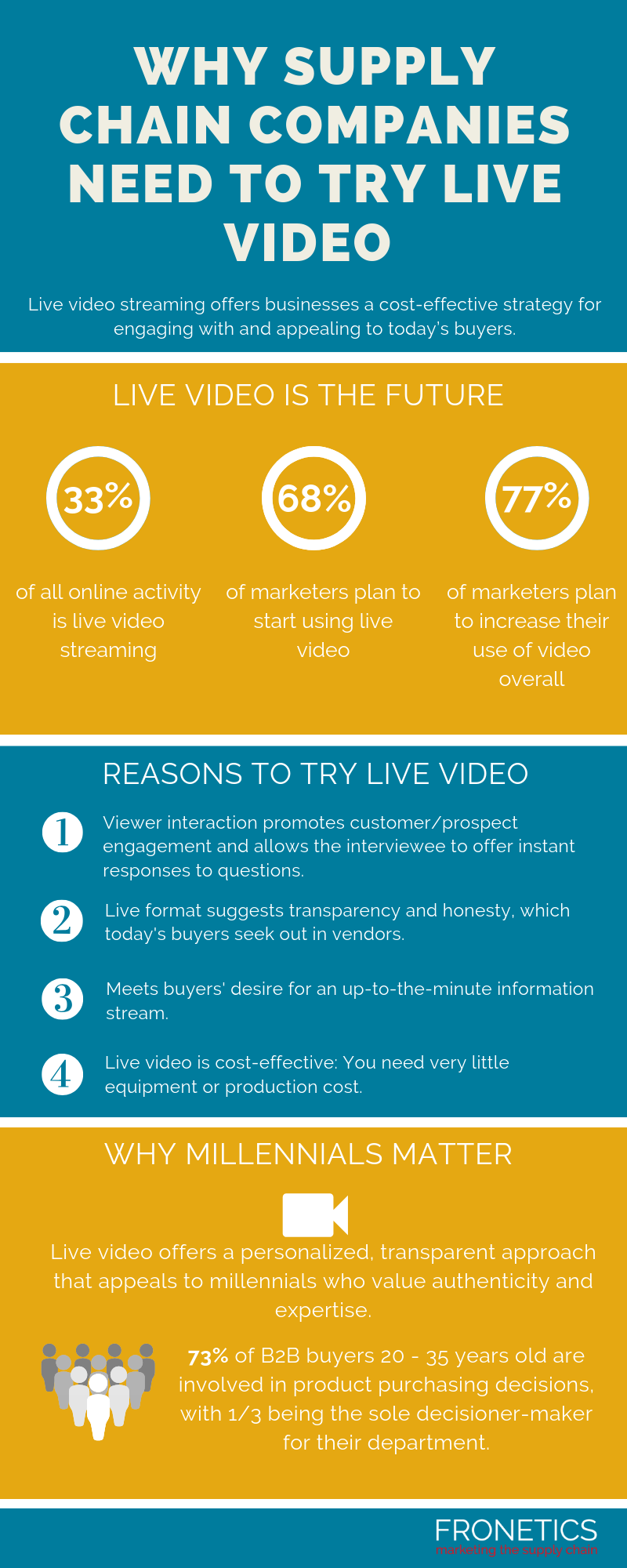
by Elizabeth Hines | Jan 22, 2025 | Marketing, SEO, Website Development
In a fiercely competitive market, standing out in search results is crucial for any supply chain website’s success. One powerful yet often overlooked tool in the SEO arsenal is FAQ schema markup. This guide will dive deep into what FAQ schema markup is, why it matters, and how to implement it effectively to enhance your search visibility.
In this post:
What is FAQ Schema Markup?
FAQ schema markup is a code snippet that helps search engines understand that a particular section of your webpage contains frequently asked questions and answers. When implemented correctly, it enables your content to appear in rich results on Google’s search engine results pages (SERPs), potentially displaying your FAQs directly in the search results.
This enhanced visibility can significantly increase your click-through rates and establish your website as an authoritative source of information in your industry.
Why Should You Implement FAQ Schema?
The benefits of implementing FAQ schema markup extend beyond just improved visibility:
1. Enhanced SERP Real Estate: Your content can occupy more space in search results through rich snippets, pushing competitors further down the page.
2. Improved User Experience: Users can find answers to their questions directly in search results, leading to better engagement when they click through to your site.
3. Voice Search Optimization: FAQ schema markup makes your content more accessible to voice search queries, an increasingly important factor in modern SEO.
4. Higher Click-Through Rates: Rich results tend to attract more clicks than standard search results, potentially driving more traffic to your website.
How to Create FAQ Schema Markup
Creating FAQ schema markup involves structuring your data in a way that search engines can understand. Here’s a step-by-step guide:
Step 1: Prepare Your FAQ Content
Before implementing the schema, ensure your FAQ content is well-organized and valuable to users. Each question should have a clear, concise answer that provides genuine value.
Step 2: Generate the Schema Code
Your FAQ schema should follow this basic structure:
“`json
{
“@context”: “https://schema.org”,
“@type”: “FAQPage”,
“mainEntity”: [{
“@type”: “Question”,
“name”: “What is your first question?”,
“acceptedAnswer”: {
“@type”: “Answer”,
“text”: “This is the answer to your first question.”
}
},
{
“@type”: “Question”,
“name”: “What is your second question?”,
“acceptedAnswer”: {
“@type”: “Answer”,
“text”: “This is the answer to your second question.”
}
}]
}
“`
Step 3: Implement the Markup
You have several options for adding the schema to your website:
1. Direct HTML Implementation: Add the schema directly to your HTML using a script tag with type=”application/ld+json”. Yes, it sounds scary, but a little HTML knowledge will get you really far.
2. Google Tag Manager: Implement the schema through GTM if you prefer a more manageable approach
3. CMS Plugins: If you’re using WordPress or another CMS, you can use plugins designed for schema implementation
Step 4: Validate the markup
After implementation, always validate your schema markup using Google’s Rich Results Test tool or Schema.org Markup Validator.
Best Practices for FAQ Schema
To maximize the effectiveness of your FAQ schema markup:
1. Keep Questions Focused
Each question should address a specific topic or concern relevant to your audience.
2. Provide Comprehensive Answers
Ensure answers are detailed enough to be helpful but concise enough to be digestible.
3. Maintain Consistency
The questions and answers in your schema should match the visible content on your page exactly.
4. Regular Updates
Keep your FAQ content fresh and updated as new questions arise or information changes.
Testing Your Implementation
Before going live, always validate your FAQ schema markup:
1. Use Google’s Rich Results Test tool to ensure your markup is correctly implemented
2. Check the Schema Markup Validator (schema.org) for additional validation
3. Monitor your Google Search Console for any schema-related errors or warnings
Common Pitfalls to Avoid
When implementing FAQ schema markup, watch out for these common mistakes:
1. Marking up content that isn’t visible on the page
2. Including promotional content in answers
3. Using the same FAQ markup across multiple pages
4. Failing to update schema when content changes
Measuring Success
Track the performance of your FAQ schema implementation through:
1. Google Search Console: Monitor rich result impressions and clicks
2. Analytics: Track changes in organic traffic and user behavior
3. SERP Tracking: Monitor your visibility for targeted keywords
And, because I love to be meta like that, I’ve created an FAQ section here as an example!
Frequently Asked Questions
Does FAQ schema markup work on all types of websites?
FAQ schema markup can be implemented on any website that provides informational content through a question-and-answer format. However, it’s particularly effective for service pages, product pages, and knowledge base articles where users commonly seek specific information. In other words, supply chain-related content is ideal!
How many FAQs should I include in my schema markup?
While there’s no strict limit, it’s recommended to include between 5-10 relevant questions per page. Focus on quality over quantity, and ensure each FAQ addresses a genuine user query. Too many FAQs might dilute the impact and could potentially be seen as spam by search engines.
Can I use FAQ schema markup on multiple pages of my website?
Yes, you can implement FAQ schema markup on multiple pages, but each page should have unique questions and answers relevant to that specific page’s content. Avoid duplicating FAQ content across different pages, as this could diminish its SEO value.
How long does it take to see results from FAQ schema markup?
The time to see results can vary depending on various factors, including your website’s authority, crawl frequency, and competition. Typically, you might start seeing rich results within a few days to a few weeks after implementation, assuming your markup is correctly implemented and validated.
Do I need technical expertise to implement FAQ schema markup?
While basic knowledge of HTML and JSON-LD is helpful, you don’t necessarily need deep technical expertise. Many content management systems offer plugins or tools that can help you implement FAQ schema markup without coding. However, it’s recommended to have a technical person review the implementation to ensure accuracy.
Can FAQ schema markup negatively affect my SEO?
When implemented correctly, FAQ schema markup won’t negatively affect your SEO. However, improper implementation, such as marking up hidden content or using irrelevant questions, could potentially lead to penalties. Always follow Google’s structured data guidelines and focus on providing valuable content to users.
Should I update my FAQ schema markup regularly?
Yes, it’s recommended to review and update your FAQ schema markup periodically. This includes adding new relevant questions, updating outdated answers, and removing irrelevant content. Regular updates help maintain the accuracy and effectiveness of your FAQ rich results.
FAQ schema markup is a powerful tool for improving your search visibility and providing value to users. By following these guidelines and best practices, you can effectively implement FAQ schema markup and gain a competitive edge in search results. Remember to regularly review and update your FAQ content and schema implementation to maintain its effectiveness and relevance.
Remember, while schema markup is important for SEO, the ultimate goal is to provide value to your users. Focus on creating high-quality, relevant FAQ content that genuinely addresses your audience’s needs, and the SEO benefits will naturally follow.
Read more:

by Elizabeth Hines | Jan 3, 2025 | Leadership, Supply Chain
From the rise of AI-driven logistics to sustainability challenges, supply chain professionals face unprecedented opportunities and obstacles. To help navigate this evolving landscape, we’ve curated five thought-provoking TED Talks for the supply chain industry that offer fresh perspectives and innovative solutions for the industry. Whether you’re a seasoned logistics expert or new to the field, these presentations deliver valuable insights into the future of supply chain management, featuring speakers who are reshaping how we think about everything from last-mile delivery to circular economy principles.
Here are 5 TED Talks for the Supply Chain
1) How to Fix Broken Supply Chains
By Dustin Burke
Supply chain challenges are real, but they’re not new, says global trade expert Dustin Burke. In the face of disruptions ranging from natural disasters to pandemics, how do we make sure supply chains can keep up? Burke offers a combination of solutions — from companies sharing risk to better forecasting disruptions — to help create a more resilient, efficient tomorrow.
Listen now >>
2) How Supply Chain Transparency Can Help the Planet
By Markus Mutz
Given the option, few would choose to buy products that harm the earth — yet it’s nearly impossible to know how most consumer goods are made or where they’re sourced from. That’s about to change, says supply chain innovator Markus Mutz. He shares how he used blockchain technology to track Patagonian toothfish on their journey from ocean to dinner plate — and proved it’s possible to offer consumers a product they can trust.
Listen now >>
3) Overcoming Fear in Manufacturing
By Katie Armstrong
Manufacturing has used relatively the same methodologies for improvements since the 1940s. There is a huge emphasis on quality in highly regulated industries such as semiconductor and automotive manufacturing. In recent years, these industries have struggled to keep up with the innovation pace that the market demands. These industries are starting to be driven by a fear of failure rather than a passion for creating value for the customer. What would the world look like if we stopped letting fear dictate our decision-making? Katie Armstrong is pursuing a part-time MBA at Bentley University and is the graduate winner of the 2022 BentleyU TEDx speaker competition. She currently works as a supplier quality engineer in the semiconductor industry and has experience working in automotive manufacturing as well. Katie is passionate about technological innovation and the positive benefits of change in manufacturing. When not working or at school, Katie enjoys hiking, rock climbing, backpacking, and anything else outdoors. This talk was given at a TEDx event using the TED conference format but independently organized by a local community.
Listen now >>
4) The Next Wave of Innovation in Freight
By Oren Zaslansky
Throughout the U.S., millions of freight trucks are buzzing goods across state lines, producing massive amounts of greenhouse emissions — and some of them are only half full. Working to make this 400-billion-dollar-a-year supply chain process as efficient and sustainable as possible, freight expert Oren Zaslansky digs into the logistics of filling these trucks to their maximum capacity through algorithmic carpooling (think: ride-sharing your freight) — bringing with it the potential of a more transparent and eco-friendly global supply chain.
Listen now >>
5) Why Rivals Are Working Together to Transform Shipping
By Bo Cerup-Simonsen
What would it take to make global supply chains cleaner and greener? Bo Cerup-Simonsen — who’s helping decarbonize the maritime industry as CEO of the Mærsk Mc-Kinney Møller Center for Zero Carbon Shipping — discusses why tenacious collaboration is key to orchestrating systemic change. In conversation with TED’s Lindsay Levin, he shares important lessons on collective problem-solving and decision-making that could benefit any industry making a green transition.
Listen now >>
Each of these TED Talks for the supply chain brings unique insights to the complex world of supply chain management. By incorporating these diverse perspectives – from technological innovation to human psychology – supply chain professionals can build more resilient, sustainable, and efficient operations for the future.
Read more:

by Elizabeth Hines | Sep 12, 2019 | Blog, Content Marketing, Marketing, Social Media, Video Marketing
Live video streaming offers businesses a cost-effective strategy for engaging with and appealing to today’s buyers.
With YouTube emerging as the world’s second largest search engine and video becoming themost popular form of online content,it is no surprise that businesses are looking for ways to engage their target audience through video. And they’re even diving into a growing trend in video marketing: publishing content in real time. It makes sense, given live video streaming now represents 33% of all online activity.
Live video was used more for niche markets in its early days. But 68% of marketers plan to start using live video in the next year, and 77% of marketers plan to increase their use of video overall.

(Made with Canva)
How can live video work for the supply chain?
Live video is an increasingly popular content medium for the millennial generation, which is important for supply chain marketers to note as the B2B purchasing landscape skews younger. Consider that around 73% of 20 to 35 year olds are involved in product purchasing decisions at their companies, with one-third reporting being the sole decision-maker for their department. And a 2015 Google/Millward Brown survey of buyers found that about half of purchasing researchers were between the ages of 18 and 24 — and that percentage has only grown in the last few years.
Another important trait to note about millennials? They’re immediately turned off by overt sales pitches. Instead, they expect vendors to offer them value outside the sales funnel by way of education, entertainment, inspiration, or knowledge. So instead of creating video content to promote products, supply chain companies should use the opportunity to provide viewers with these elements of value they expect.
Live video streaming is the ideal medium for doing so, as it offers the transparency, emotion, and personal elements millennial buyers desire. Vendors can connect with buyers on an emotional level while simultaneously communicating their companies’ expertise, which directly impacts the buyers’ opinions of their solutions.
4 reasons to try live video streaming
Live video streaming offers real benefits for supply chain companies in addition to the increasing opportunity to connect with prospective buyers. When clients ask about whether they should try live video, I give them these four reasons:
1. Earn customer/prospect engagement and feedback
Most live video platforms have features that allow for viewer interaction, meaning customers and prospects can ask you questions and get instant responses. (Talk about excellent customer service!) That generates a positive experience that strengthens their relationship with your company. Also, you get the benefit of hearing feedback from a portion of your audience, which you can use to drive change and growth.
2. Promote transparency
Live video can be unpredictable, raw, and honest — which, admittedly, can be scary for the person filming. But today’s buyers crave this kind of transparency. When you go live, things may not always go as planned, but that will work in your favor more often than not.
3. Appeal to those who love to be in-the-minute
Social media users love to feel on top of their information streams. Live video offers that sense of insider, up-to-the-minute scoop that appeals to them.
4. Publish video in a cost-effective way
High-production videos can be costly and can take weeks to produce. One of the best parts about live video is that you need only a smart phone, a Wi-Fi connection, and someone willing to appear on camera (which is sometimes harder than it sounds). Publishing happens in real time, and then most platforms allow you to archive the footage for viewers to access later.
The takeaway
We’ve seen clients have great success with live video streaming. It’s one of those trends that’s not going away anytime soon. In fact, social platforms are increasingly adding “live” and “Stories-like” features to satisfy users’ seemingly insatiable appetite for this format.
That means if you haven’t tried live video, you should think about it. Pretty soon you’ll be one of the only ones among your competitors who is not — if you’re not already.
This post originally appeared on EBN Online.
Related posts:


by Elizabeth Hines | Apr 17, 2019 | Blog, Marketing, Marketing Automation
Chatbots are a must-have lead generation and customer service tool for supply chain businesses in 2019.
The newest generation of B2B buyers is increasingly dominating the two-way conversation between marketers and buyers. They prefer to gather purchasing information on their own — overwhelmingly via online searches, vendor websites, and peers and colleagues — rather than talking to sales representatives. They are unsubscribing from marketing emails at alarming rates, citing over-communication as the number-one reason why. And they are using messaging platforms to speak directly with brands when they have questions or problems.
At the same time, buyers are demanding more personalized communications, faster response times, and an improved, cohesive user experience on all of a vendor’s digital channels.
All these factors are driving the growing popularity of chatbots as a lead generation and customer service tool. But, at Fronetics, we think it’s time to stop viewing them as a trendy communication mechanism and more as a necessary part of a supply chain operation’s marketing strategy.
Chatbot applications for the supply chain
I’ve written before about the impressive implications that automation has for supply chain marketing & sales efforts. (HubSpot reports that businesses using marketing automation receive a 451% increase in qualified leads.) At Fronetics, we’re seeing chatbots as one of the most successful and easy-to-implement marketing automation tools in the current marketplace.
Chatbots are relatively inexpensive, inherently low-maintenance, and surprisingly user-friendly — to both the buyers interacting with them and the vendors setting them up. They help website visitors find the information they need quickly, while gathering user data that is useful in marketing and sales efforts, all without taxing human resources. In fact, Chatbots Life reports that businesses can save up to 30% of costs associated with servicing customer requests by using a chatbot.
Millennials, in particular, appreciate the quick, easy, and unobtrusive communication option that chatbots offer. And, as we all know, this generation comprises an increasing percentage of the B2B purchasing landscape. In a crowded marketplace, vendors that offer a pleasing user experience will have the competitive edge when it comes to winning business and growing a base of loyal customers.
A real-life example
We are recommending chatbots to clients because we have seen firsthand how effective they can be. I’ll give you an example from our own experience at Fronetics.
We recently implemented a chatbot on our website that we synced with my calendar, allowing users to schedule a time to speak with me about our services. I am not exaggerating when I say that within 24 hours, we had a lead come through the bot. I spoke with that lead at the time he scheduled, the next morning, and delivered a proposal to him the next day.
Chatbots are here — in a big way. If you’re not using one, your competitors certainly are (or will be soon). Having a chat mechanism on your website will soon be the difference between winning more business and missing out… if it’s not already.
This post originally appeared on EBN Online.
Related posts:


by Elizabeth Hines | Mar 20, 2019 | Blog, Logistics, Robotics & Automation, Supply Chain
With the power to drastically increase efficiency in all areas of the supply chain, it’s important brands are exploring the benefits of AI. Here are four examples of how AI can benefit your supply chain.
Highlights:
- It’s estimated that supply chain firms could gain $1.3 to $2 trillion a year from using AI.
- Machine learning has the ability to quickly discover patterns in supply chain data by relying on algorithms and constraint-based modeling to find the most influential factors.
- The increasing popularity of chatbots is making it harder to ignore how AI is helping shape not just the daily logistics but also the B2B marketing landscape and operational procurement for supply chain industries.
Artificial intelligence is not simply affecting supply chain management, it is revolutionizing it.
With the power to drastically increase efficiency in all areas of the supply chain, McKinsey estimates that firms could gain $1.3 trillion to $2 trillion a year from using AI in supply chain and manufacturing.
Here are 4 examples of AI and how it’s changing supply chain management for the better.
1. Autonomous transport
There’s nothing more exciting than the field of autonomous transport for SCM. We’ve all known for many years that driverless trucks have major potential to affect supply chain management and logisitics.
We aren’t there yet – and “anyone employed as a driver today will be able to retire as a driver” — but if autonomous trucking can be developed to its potential, the technology would effectively double the output of the U.S. transportation network at 25 percent of the cost.
The conversation is no longer simply talking about vehicles on the road either. Google and Rolls-Royce recently partnered to build autonomous ships too.
2. Final-mile delivery route efficiency
One doesn’t have to have a driverless vehicle, however, to use AI to optimize delivery logistics.
For example, in the “devilishly complex” task of delivering 25 packages by van, the number of possible routes adds up to around 15 septillion (that’s a trillion trillion).
That’s where route optimization software and AI-powered GPS tools like ORION — which UPS uses to create the most efficient routes for its fleet — are making their mark. With ORION, customers, drivers and vehicles submit data to the machine, which then uses algorithms to creates the most up-to-date optimal routes depending on road conditions and other factors.
And there are also other autonomous entities out there besides cars, trucks, and ships. Robots using LIDAR technology are now being used to deliver items in crowded city environments. For example, Marble’s robots deliver medicine, groceries, and packages, and they also track their routes and the condition in order to continuously improve delivery for the next time. Additionally, last-mile solutions with drones continue to be explored due to their ability to move quickly and bypass almost all ground-level obstacles.
3. Demand forecasting, particularly for warehouse management and SCM strategy
Machine learning has the ability to quickly discover patterns in supply chain data by relying on algorithms and constraint-based modeling to find the most influential factors. This ability to find data patterns without human intervention has applications in EVERY aspect of SCM, but demand forecasting is a particularly influential component beneficiary.
Warehouse management and SCM strategy rely heavily on correct supply, demand, and inventory-based management. Forecasting engines with machine learning offer an entirely new level of intelligence and predictive analysis of big data sets that provides an endless (and constantly self-improving) loop of forecasting, overhauling the way we manage inventory and the way we create new strategies for our industries.
4. Chatbots for marketing and operational procurement
The increasing popularity of chatbots is making it harder to ignore how AI is helping shape not just the daily logistics but also the B2B marketing landscape and operational procurement for supply chain industries.
A chatbot is a computer program that simulates human conversation using auditory or textual methods. It communicates with your customer inside a messaging app, like Facebook Messenger, and is similar to email marketing without landing in an inbox. Mimicking a human conversation, chatbots currently allow for increased customer engagement through messaging app technology that isn’t yet saturated with marketing. They are just one of the many ways to integrate AI and marketing.
There’s so much more than these 4 examples to consider when discussing AI and the supply chain: prediction of delivery arrival times to the warehouse and to the customer, cargo sensors, automated purchasing, financial applications…the list literally may be endless.
Choosing what to focus on for this article, and more importantly, for all supply chain and logistics businesses, is a tough decision, but one thing is clear: in the “arms race” to leverage AI in SCM, some will come out on top and some will be left behind.
This post originally appeared on EBN Online.
Related posts:










